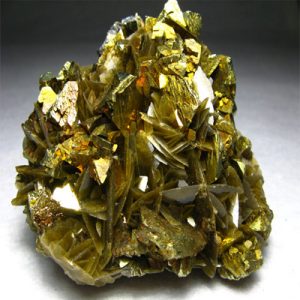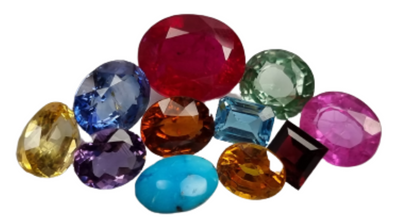
Chalcopyrite: Gemstones Information
Chalcopyrite is CuFeS2 and forms equant tetrahedral-shaped crystals often with modification by scale nohedral faces; it also forms compact masses. Chalcopyrite has a metallic luster though brass-yellow often shows tarnish and iridescence. The hardness is 3.5–4 and the SG 4.1–4.3. It is sometimes used for cabochons though specimens are more often sought in their original state. Chalcopyrite occurs as a primary mineral in hydrothermal veins and in other environments. The occurrence is worldwide.
Title: Exploring Chalcopyrite: Properties, Uses, and Benefits
Introduction: Chalcopyrite, a mesmerizing mineral with a metallic luster and vibrant hues, has fascinated humans for centuries with its unique properties and diverse applications. In this article, we will delve into the origins, properties, uses, and the myriad benefits of chalcopyrite, uncovering its allure for collectors, artisans, and metaphysical practitioners alike.
Origins and Formation: Chalcopyrite, also known as copper pyrite, derives its name from the Greek words “chalkos” for copper and “pyrites” for fire, reflecting its copper content and characteristic brassy coloration. This mineral is commonly found in hydrothermal veins associated with copper ore deposits, often occurring alongside other sulfide minerals such as pyrite, sphalerite, and galena. Chalcopyrite forms through the crystallization of copper-bearing solutions in the presence of sulfur under high-temperature conditions.
Properties: Chalcopyrite is renowned for its metallic luster and striking coloration, which ranges from brassy yellow to golden yellow with iridescent hues of blue, purple, and green. It crystallizes in the tetragonal crystal system and often occurs as massive aggregates or granular masses. Chalcopyrite exhibits a Mohs hardness of 3.5 to 4, making it relatively soft compared to other minerals. It is also a significant source of copper, serving as one of the primary ores for copper extraction worldwide.
Uses and Applications: Chalcopyrite has a wide range of industrial applications, owing to its copper content and electrical conductivity. It is a vital ore mineral for the production of copper, with significant deposits found in countries such as Chile, Peru, and the United States. Copper extracted from chalcopyrite is used in various industries, including electronics, construction, transportation, and telecommunications.
In addition to its industrial significance, chalcopyrite is also valued in the realm of lapidary arts and jewelry crafting. Its vibrant colors and metallic luster make it a sought-after gemstone for ornamental purposes. Chalcopyrite is often faceted or cabochon-cut to showcase its iridescent hues and incorporated into earrings, pendants, and statement pieces. Its unique appearance and relative affordability have made it a popular choice among jewelry designers and collectors.
Metaphysical Properties and Benefits: Chalcopyrite is revered for its metaphysical properties, which are believed to promote abundance, prosperity, and vitality. It is often referred to as the “stone of abundance” or “stone of the mystic,” owing to its association with wealth and manifestation. Chalcopyrite is said to attract abundance into one’s life, whether in the form of financial prosperity, opportunities, or spiritual growth.
Furthermore, chalcopyrite is believed to stimulate the flow of chi or life force energy throughout the body, enhancing vitality, stamina, and overall well-being. It is associated with the solar plexus chakra, empowering individuals to assert themselves, pursue their goals, and overcome obstacles with confidence and determination.
Chalcopyrite is also thought to have protective properties, shielding individuals from negative energies, electromagnetic radiation, and psychic attacks. It is often used as a talisman for grounding, protection, and spiritual transformation, helping individuals to maintain a sense of balance and harmony amidst life’s challenges.
Caring for Chalcopyrite: Due to its relatively soft nature, chalcopyrite should be handled with care to prevent scratches and damage to its surface. It is advisable to store chalcopyrite jewelry separately from harder gemstones and metals to avoid abrasion. Cleaning chalcopyrite jewelry with a soft brush or cloth and mild soap and water is sufficient to maintain its luster and beauty over time.
Conclusion: Chalcopyrite stands as a testament to the remarkable diversity and beauty of the mineral kingdom, captivating enthusiasts and practitioners with its vibrant colors, metallic luster, and metaphysical properties. Whether admired for its industrial significance, ornamental value, or spiritual significance, chalcopyrite continues to inspire awe and wonder, inviting exploration into the hidden treasures of the Earth’s crust.
Buy Our Natural Gemstones Online at http://Gemfame.com Call for details at Mobile +91 9444456511, Landline +91 44 42333655.




